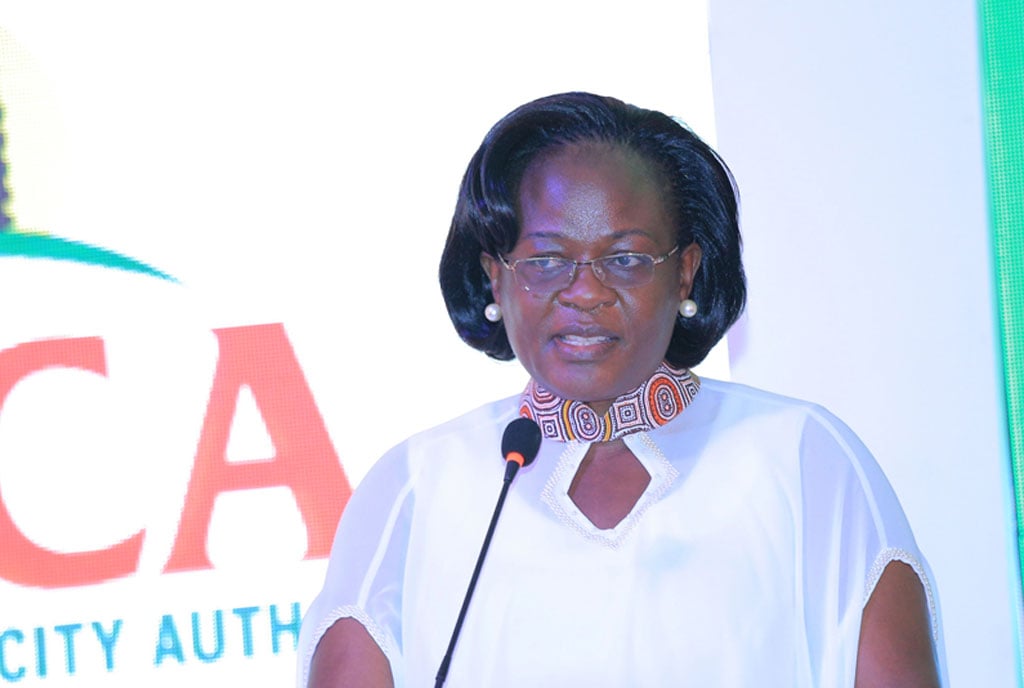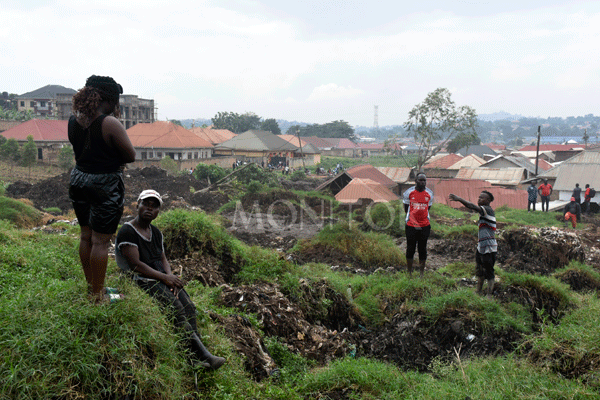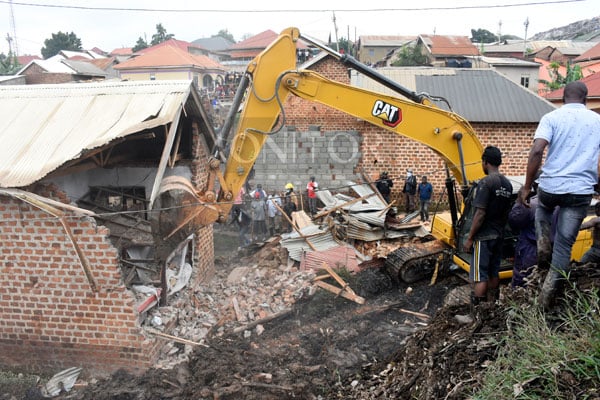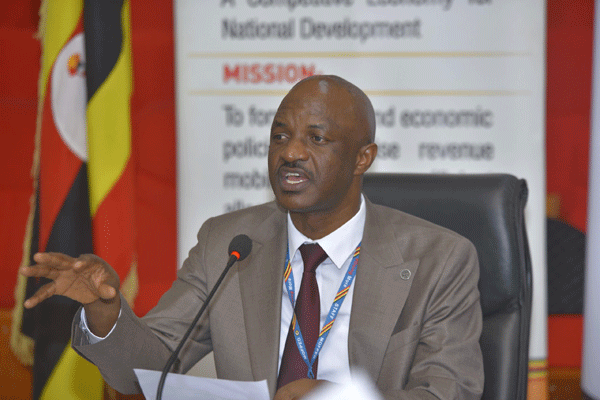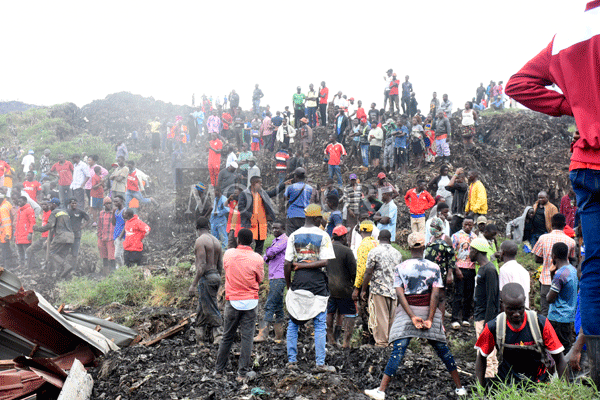
Residents gathered at Kiteezi landfill where a heap of garbage fell on houses and livestock on August 10, 2024. PHOTOS/ ISAAC KASAMANI
The Saturday morning disaster at Kiteezi landfill in Kasangati Town Council, Wakiso District, has brought to the fore question whether Kampala Capital City Authority (KCCA) can manage waste disposal in the city.
Concerns that the landfill had outlived its lifespan were raised nearly 10 years ago, but the city authorities watched on as the situation worsened until disaster struck.
Authorities yesterday confirmed 25 bodies had been retrieved, more than 14 victims rescued, several livestock killed, and properties worth millions lost following the collapse of the landfill.
Data from Kampala Waste Management Report for 2023 shows the city generates up to between 2,000 and 2,500 tons of waste daily but is only able to collect and dispose of an average of 1,300 to 1,500 tons per day. This implies about 50 percent of the waste is uncollected or improperly disposed of.
The waste management report says such garbage remains a prime environmental concern in the city because it is a major cause of ungazetted waste dumpsites in all the five divisions of Kampala and Greater Kampala Metropolitan Area.
The KCCA statistics indicate that organic waste is the leading waste stream generated across all urban authorities in Uganda.
The typical statistical count of waste composition at Kampala’s final dumping site at Kiteezi shows that biodegradable waste accounts for 43 percent of all the waste generated in the city, followed by mixed fines waste standing at 42 percent, plastics at six percent, animal and sanitary waste at three percent each and paper waste at two percent.
KCCA then sought to improve the waste management services by engaging the private sector through a Public private partnership (PPP) framework to promote efficiency in waste collection, disposal, recycling and upcycling.
The plan included improving efficiency of waste management by financing a new landfill at Ddundu in Mukono District, which would replace the exhausted landfill at Kiteezi.
Waste-to-energy plant option
In 2023, KCCA opted for a waste-to-energy plant as an alternative to dumping rubbish. This is an approach that cities are opting for as cleaner alternatives of taking care of garbage by converting it into energy, which they say is the biggest way out in achieving sustainable development goals.
Ms Dorothy Kisaka, the KCCA executive director, yesterday told this publication that the authority is in the advanced stages of setting up a waste recycling plant to convert Kampala’s waste or garbage into energy.
“There is no other solution except to adopt a holistic solution of recycling, and waste-to-energy plants are the way to go. KCCA has already embarked on that journey and we are in the advanced stage of doing that,” she said.
Opposition politician Dr Kizza Besigye said the government should have stepped in earlier to solve the crisis.
These concerns were echoed by many who believed this tragedy could have been averted had the authorities taken quick action to save the situation by looking for an alternative landfill and acted faster.
From strengthening waste collection and disposal systems, public awareness and education, infrastructure development, enforcement of regulations to community engagement, environmentalists have advised that for Kampala to solve its waste crisis, the government must stop burying its head in the sand, but rise up to the occasion.
They say all the agencies involved in environmental management and KCCA should leave their comfort zone and get dirty to solve the problem.
Mr Frank Muramuzi, the executive director of the National Association of Professional Environmentalists, proposed that the government should procure more land in different areas to lighten the burden of dumping the waste in one place. He said this would make it easier to manage waste rather than filling one place with heaps of garbage that is left to rot, risking the kind of disaster that has happened at Kiteezi.
“They can buy about five or six places [for landfill] and then don’t wait for it to pile up and make mountains. As a country, we need to act faster than disaster strikes,” he said.
Mr Muramuzi said institutions like KCCA that should have received money for waste management are being neglected while huge amounts of money is allocated and wasted on non-essential issues to gain political patronage, while service delivery is limping.
He said the government should emphasise recycling non-biodegradable waste as is being done in Rwanda.
Private sector
WasteAid, a UK-based charity organisation, earlier this year announced it was launching a wasteprenuer project that would turn waste into profits. Under the project, youths and women in the country would develop a more robust circular economy to tackle its growing waste problem. The charity organisation said the 2-year initiative will support women and youth entrepreneurs in the waste and recycling space through providing training, seed funding, and mentoring.
